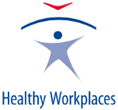From riders to nurses, cleaners and translators: explore the diverse profiles of platform workers
Digital platform work takes many forms, mirroring the diversity found across the sectors it encompasses. This article provides an overview of who are the digital platform workers and what type of jobs and tasks they carr...
HSE+ engages Italian readers on the new campaign and digital platform work
One of the newest additions to the network of media partners, HSE+ based in Italy, has recently brought attention to the 2023-25 Healthy Workplaces Campaign ‘Safe and healthy work in the digital age’ through several arti...
Submit your entry for the Good Practice Awards, embracing the digital age of work!
Organised in collaboration with our national focal points, the Healthy Workplaces Good Practice Awards commend all types of organisations across Europe showcasing innovative approaches that promote worker wellbeing. The ...
Infographic among new resources on digital platform work
Digital platform work encompasses a wide variety of jobs and workers facing very diverse occupational safety and health (OSH) challenges. To complement existing resources to raise awareness of this Healthy Workplaces Cam...
Digital innovation in preventive healthcare: insights from International ORP Foundation's webinar
The International ORP Foundation, a new official campaign partner of the Healthy Workplaces Campaign 2023-25 'Safe and healthy work in the digital age', recently hosted a webinar titled 'Digitalisation and wellbeing: a n...
Pagination






